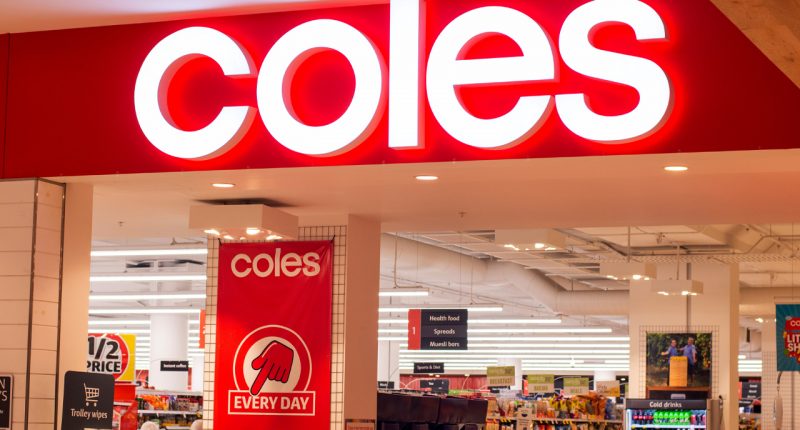The sudden spread of COVID-19 has put an unprecedented strain on global economies. The virus sent investors running for the hills, businesses scrambling for cash, and householders barring their doors.
However, there was one other side-effect the virus had on consumers: it sent them flocking to supermarket shelves in a panic-buying frenzy.
Demand for perishable goods and toilet paper skyrocketed to the degree that Australian retailers had to put daily item limits per customer in place just to have enough supply to re-stock their shelves in the morning.
While discretionary retailers stood down staff and closed shops across the globe, grocers and supermarkets experienced greater demand than ever before.
This explains how while some companies still have their shares worth just a fraction of what they were before the pandemic, Coles Group (COL) took less than three weeks to completely recover from its late-February slump.
In fact, Coles reached its all-time-high share price in the midst of the pandemic on March 19, when shares closed worth $17.25 each.
Coles by the numbers
Over the March 2020 quarter, Coles increased total sales by 12.9 per cent, earning $9.2 billion in three months.
Supermarkets sales increased by 13.1 per cent and liquor sales by 7.2 per cent — despite liquor sales being impacts by bushfires and floods over January.
Moreover, Coles opened three new supermarkets and renewed six more over the quarter.
To keep up with COVID-19 demand, the supermarket giant hired 12,000 casual staff over less than one quarter.
When pubs and clubs were forced to close by the Australian Government in late March, the company saw a similar demand spike for its liquor products, prompting an item limit per customer in this sector of the company’s business, too.
Importantly, Coles maintained its interim dividend and forked out $400 million for a 30-cent, fully franked dividend at the end of March.
Is the growth sustainable?
A natural concern for eager investors is the sustainability of the severe upswing in operations.
Is this a short-term boost for Coles? Will the coming quarters see weakening demand and a slumping share price?
In Coles’ case, its track record suggests otherwise. Coles was posting consistent quarter-on-quarter growth long before the coronavirus gripped global markets.
In fact, the March 2020 quarter was the company’s 50th consecutive quarter of comparable sales growth.
This suggests the COVID-19 pandemic is more likely to act as a short-term revenue and demand boost rather than a long-term liability.
While consumer behaviour will undoubtedly be impacted for years following the end of the pandemic, normalised conditions will mean regular consistent growth for the country’s second-largest supermarket chain.
Of course, if this is the case, why is the Coles share price currently so wild?
The March rollercoaster
While Coles was able to recover from its February slump relatively quickly, this doesn’t mean it’s been a smooth ride since.

Late March saw several sessions of wild share price movements. Coles would lose a tenth of its value in two trading sessions, then recover most of its losses two days later.
For example, in just three sessions the Coles share price spiked from $15.73 to $16.82, then slumped back down to $15.16 before rebounding to $15.83.
While the share price somewhat-stabilised over April, Coles still struggled to gain for more than two sessions in a row before reversing the ground it took, and vice versa.
Investors seem eager to snatch up Coles shares at a premium, but equally eager to dump them at the first sign of economic distress.
No such thing as a free lunch
A key concern for investors is the increased spending necessary to meet the strengthened demand.
Coles has far higher wage costs to manage with the arrival of its 12,000 new casual staff. Moreover, the company has to spend more on cleaning, securities, and queuing systems to comply with social distancing measures.
However, the company said at the end of April, its sales growth has broadly trended back to pre-COVID-19 levels, while the measures undertaken to keep up with the virus’ demand boost are still in place.
Coles said it is unsure how long the company will be impacted by the coronavirus, and subsequently how long the extra spending measures will be in place.
Thus, shareholders are faced with the juxtaposition of the sudden spike in sales and the ongoing heightened costs.
What are the experts saying?
Analysts at Wall Street Journal tipped Coles as underweight three months ago — when it was in its 49th consecutive quarter of sales growth. Of 13 analysts, six rated Coles a “hold”, six a “sell”, and just one a “buy”.
So, how has this changed in the face fo COVID-19?
In early May, Wall Street Journal analysts chimed a different bell, with 10 buy ratings, three hold ratings, and just one sell rating.
Right now, the analysts have Coles’ average price target set at $17.31.
Similarly, Credit Suisse lifted its share price target to $18.68 in late April.
Goldman Sachs has maintained its buy rating for Coles and an $18.60 price target.
At any rate, these price targets suggest that Coles’ closing price of $15.32 today is below where it should be.
How does Woolworth compare?
It would be remiss to discuss the Coles share price without making mention of its primary rival, Woolworths.
Here’s the Woolworths share price over 2020 so far:

When compared to Coles’ share price, it’s clear Woolworths has suffered a far heavier blow from the COVID-19 crisis than its rival.
Shares in Woolworths have lost over a fifth of their value since their February peak; Coles shares just a tenth.
While the final quarter of the 2020 financial year will be the most telling for our supermarket giants, the question on investors’ lips remains the same:
Will our supermarkets’ sales boost be enough to offset their heightened costs?








